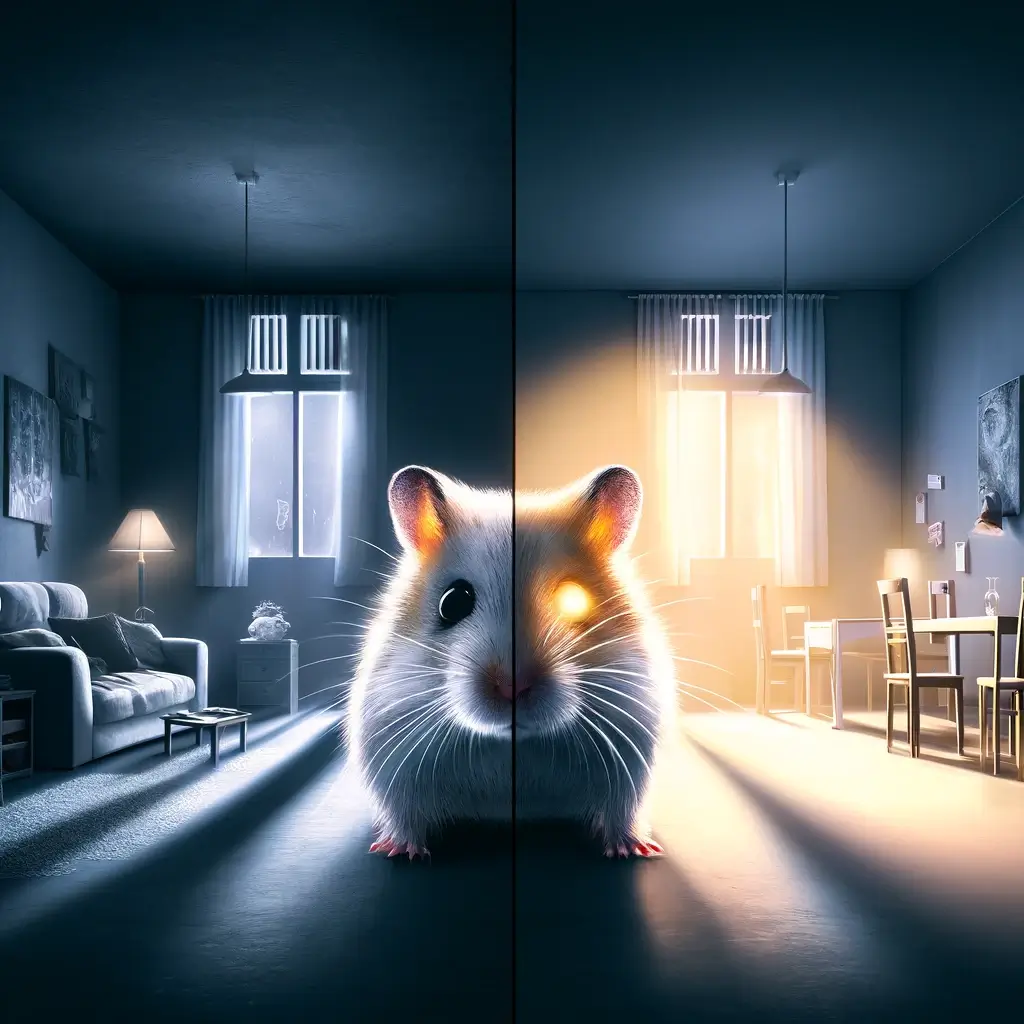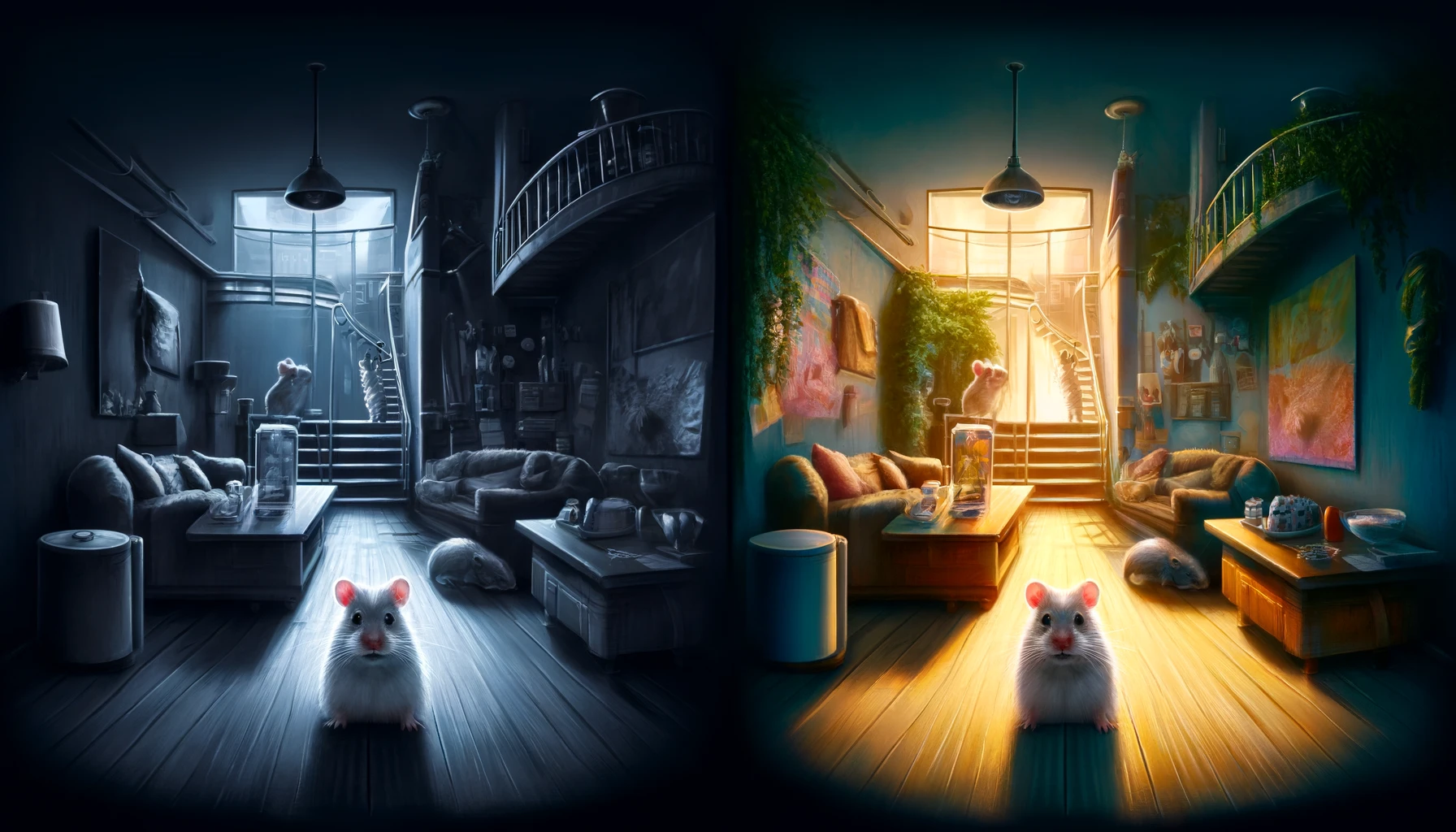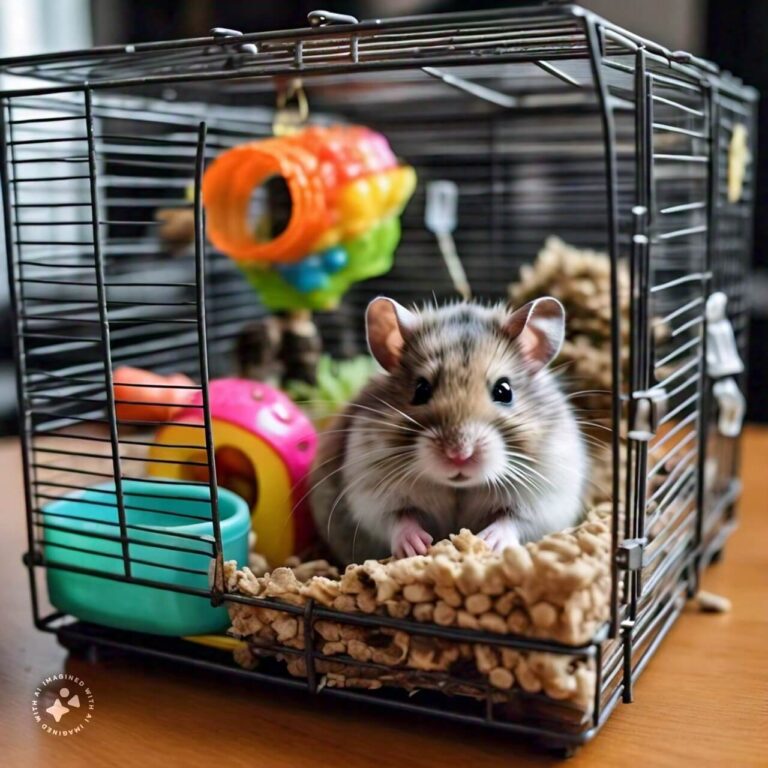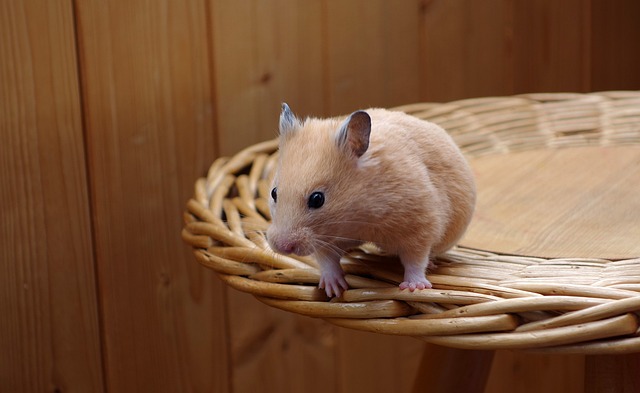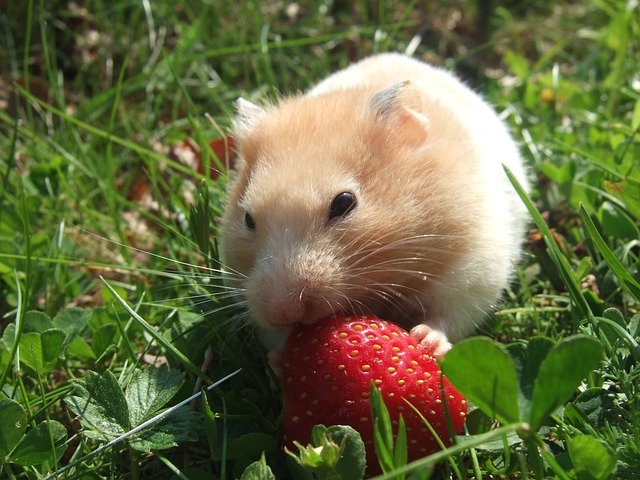How Do Hamsters See In The Dark – Hamsters.pk
Hamsters’ Enhanced Night Vision: Evolutionary Adaptations for Nocturnal Life
Hamsters are well-known for their nocturnal nature, being active primarily during the night. Their ability to navigate and forage in low-light conditions is a result of various evolutionary adaptations that have enhanced their night vision. In this article, we will explore the fascinating ways in which hamsters have adapted to see in the dark.
The Importance of Night Vision for Hamsters
In the wild, hamsters are prey animals, constantly at risk of being hunted by predators. Being active at night allows them to avoid many daytime predators, but it also presents the challenge of navigating and foraging in low-light conditions. Over time, hamsters have evolved several adaptations that enhance their night vision, enabling them to survive and thrive in their nocturnal environment.
Larger Eyes and Pupils
One of the most noticeable adaptations in hamsters is their large, prominent eyes. In proportion to their body size, hamsters have significantly larger eyes compared to many other mammals. These large eyes allow more light to enter, improving their vision in dimly lit environments. Additionally, hamsters’ pupils are capable of dilating to a greater extent than those of diurnal animals, further increasing the amount of light that reaches their retinas in low-light conditions.
Tapetum Lucidum: The Secret to Shining Eyes
Hamsters, like many other nocturnal animals, possess a unique structure called the tapetum lucidum. This is a reflective layer located behind the retina that reflects light back through the retina, giving the photoreceptor cells a second chance to absorb and process the light. This is why hamsters’ eyes appear to glow or shine when exposed to bright light in the dark. The tapetum lucidum significantly enhances their low-light vision, allowing them to detect and respond to even the faintest traces of light.
High Concentration of Rod Cells
The retina of a hamster’s eye contains a high concentration of rod cells, which are photoreceptor cells that are highly sensitive to light. Rod cells are responsible for detecting light in low-light conditions and are essential for night vision. In contrast, cone cells, which are responsible for color vision and detailed sight, are less abundant in hamsters’ eyes. This higher ratio of rod cells to cone cells further enhances their ability to see in the dark.
Adaptations in Brain Processing
In addition to the physical adaptations in their eyes, hamsters’ brains have also evolved to process visual information more efficiently in low-light conditions. Their visual cortex is well-developed and highly sensitive to small changes in light and motion. This allows hamsters to quickly detect and respond to potential threats or opportunities in their environment, even in near-darkness.
Hamsters’ incredible night vision is a testament to the power of evolutionary adaptations. Through a combination of large eyes, reflective tapetum lucidum, high concentrations of rod cells, and efficient brain processing, these small mammals have become well-equipped to navigate and thrive in the darkness. Understanding these adaptations not only helps us appreciate the remarkable abilities of hamsters but also sheds light on the fascinating ways in which animals adapt to their environments over time.
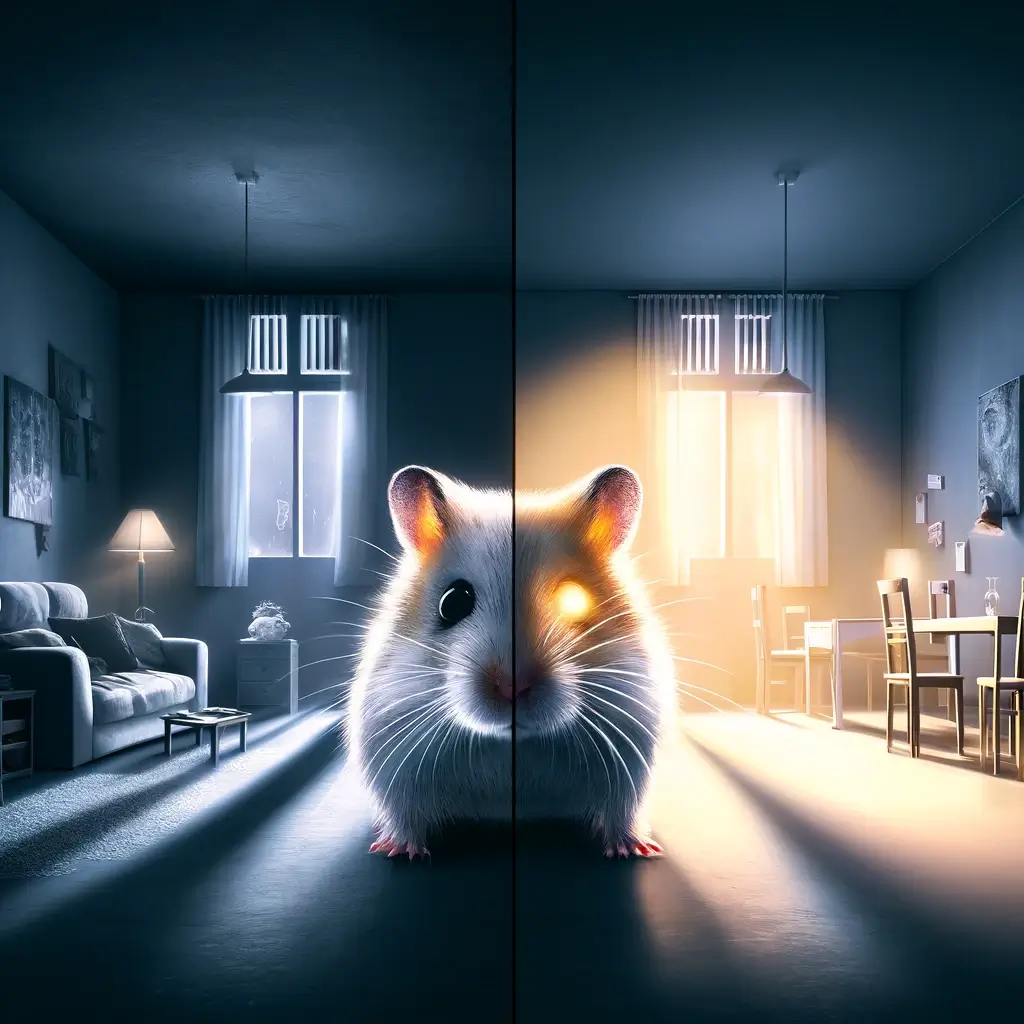
The Role of the Tapetum Lucidum in Hamsters’ Low-Light Vision
Hamsters are known for their remarkable ability to navigate and forage in low-light conditions, thanks to their unique adaptations for nocturnal life. One of the most intriguing adaptations is the presence of a specialized structure called the tapetum lucidum in their eyes. This article will delve into the fascinating role of the tapetum lucidum in enhancing hamsters’ low-light vision.
What is the Tapetum Lucidum?
The tapetum lucidum is a reflective layer located behind the retina in the eyes of many nocturnal animals, including hamsters. It is composed of special cells called tapetal cells, which contain crystalline structures that reflect light back through the retina. This unique structure acts as a biological mirror, giving the photoreceptor cells in the retina a second chance to absorb and process light that has already passed through once.
How Does the Tapetum Lucidum Enhance Night Vision?
The primary function of the tapetum lucidum is to increase the amount of light available to the photoreceptor cells in the retina, specifically the rod cells responsible for low-light vision. When light enters the eye and passes through the retina, some of it is absorbed by the photoreceptor cells, while the rest continues through the eye. In eyes with a tapetum lucidum, the unabsorbed light is reflected back through the retina, giving the rod cells another opportunity to capture and process the light.
This reflection of light effectively doubles the amount of light available to the photoreceptor cells, significantly enhancing the animal’s ability to see in dim conditions. The tapetum lucidum is particularly useful for nocturnal animals like hamsters, as it allows them to make the most of the limited light available at night.
The Glowing Eyes Phenomenon
One of the most striking effects of the tapetum lucidum is the “glowing eyes” phenomenon often observed in animals with this adaptation. When a bright light is shone into a hamster’s eyes in the dark, the light is reflected back by the tapetum lucidum, causing the eyes to appear to glow or shine. This eerie glow is not actually produced by the animal itself but is simply a reflection of the light source.
Different animals exhibit different colors of eye shine, depending on the specific composition of their tapetum lucidum. In hamsters, the eye shine is typically bright green or yellow-green.
Evolutionary Significance of the Tapetum Lucidum
The presence of the tapetum lucidum in hamsters and other nocturnal animals is a result of evolutionary adaptations to their low-light environments. By enhancing their night vision, the tapetum lucidum allows these animals to navigate, forage, and avoid predators more effectively in the dark.
In the case of hamsters, improved low-light vision is particularly crucial for their survival. As small prey animals, they are constantly at risk of being hunted by predators. Being able to detect potential threats and escape quickly in dim conditions is essential for their survival.
The tapetum lucidum is a remarkable adaptation that plays a crucial role in enhancing hamsters’ low-light vision. By reflecting light back through the retina, this specialized structure maximizes the amount of light available to the photoreceptor cells, significantly improving the animal’s ability to see in the dark. The presence of the tapetum lucidum is a testament to the incredible evolutionary adaptations that allow nocturnal animals like hamsters to thrive in their low-light environments.
Rhodopsin: The Light-Sensitive Protein Enabling Hamsters to Navigate in the Dark
Hamsters are well-adapted to life in low-light conditions, thanks to a combination of physical and biological adaptations. One of the most crucial components of their enhanced night vision is a light-sensitive protein called rhodopsin. This article will explore the essential role of rhodopsin in enabling hamsters to navigate and thrive in the dark.
What is Rhodopsin?
Rhodopsin is a photosensitive pigment found in the rod cells of the retina, the part of the eye responsible for low-light vision. It is a complex protein consisting of two main components: opsin, a protein component, and retinal, a light-sensitive molecule derived from vitamin A. When light hits the retina, it triggers a chemical change in the retinal molecule, which in turn activates the opsin protein, initiating the process of visual perception.
The Role of Rhodopsin in Low-Light Vision
Rhodopsin is particularly sensitive to light, making it a critical component of night vision in many animals, including hamsters. The high sensitivity of rhodopsin allows the rod cells in the retina to detect even the faintest traces of light, enabling hamsters to navigate and forage in dimly lit environments.
When light enters the eye and reaches the retina, it is absorbed by the rhodopsin in the rod cells. This absorption causes the retinal molecule to change shape, triggering a cascade of chemical reactions that ultimately lead to the generation of electrical signals. These signals are then transmitted to the brain via the optic nerve, where they are interpreted as visual information.
Rhodopsin and Dark Adaptation
Rhodopsin plays a crucial role in the process of dark adaptation, which is the ability of the eyes to adjust to low-light conditions. When a hamster moves from a brightly lit environment to a dimly lit one, the rhodopsin in its rod cells is initially bleached by the bright light, rendering the cells less sensitive to light. However, over time, the rhodopsin is regenerated, allowing the rod cells to regain their sensitivity to low light levels.
This process of dark adaptation is gradual and can take several minutes to complete. During this time, the hamster’s vision slowly improves as more rhodopsin becomes available to absorb light. This adaptation is essential for hamsters, as it allows them to maintain their visual acuity and navigate effectively in the dark.
The Importance of Rhodopsin for Hamsters’ Survival
The presence of rhodopsin in hamsters’ rod cells is a critical adaptation that enables them to thrive in their nocturnal environment. As small prey animals, hamsters are constantly at risk of being hunted by predators. The ability to detect even the faintest traces of light and movement in the dark is essential for their survival, as it allows them to spot and avoid potential threats.
Moreover, rhodopsin’s role in enhancing low-light vision is crucial for hamsters’ ability to forage and find food in the dark. By enabling them to navigate and locate resources in dimly lit environments, rhodopsin contributes to their overall fitness and success as a species.
Rhodopsin is a vital light-sensitive protein that plays a central role in enabling hamsters to navigate and thrive in the dark. Its high sensitivity to light and its ability to trigger the process of visual perception in low-light conditions make it an essential component of hamsters’ enhanced night vision. Through the process of dark adaptation, rhodopsin allows hamsters to adjust to dimly lit environments and maintain their visual acuity, ensuring their survival in their nocturnal habitat.
Hamsters’ Visual Acuity and Color Perception in Low-Light Conditions
Hamsters are well-known for their adaptations to nocturnal life, which include enhanced night vision. However, their visual acuity and color perception in low-light conditions are often overlooked. This article will explore the fascinating aspects of hamsters’ visual capabilities in dimly lit environments, focusing on their visual acuity and color perception.
Visual Acuity in Low-Light Conditions
Visual acuity refers to the sharpness or clarity of vision, determined by the eye’s ability to distinguish fine details. In humans and many other diurnal animals, visual acuity is highest in well-lit conditions and decreases in low-light environments. However, for nocturnal animals like hamsters, visual acuity is optimized for low-light conditions.
Hamsters’ eyes are equipped with a high concentration of rod cells, which are photoreceptor cells that are highly sensitive to light. These cells are responsible for detecting light in low-light conditions and are essential for night vision. The high number of rod cells in hamsters’ eyes allows them to detect even the faintest traces of light, enhancing their visual acuity in dimly lit environments.
Limitations of Visual Acuity
While hamsters’ eyes are well-adapted for low-light vision, their visual acuity is not as sharp as that of diurnal animals in well-lit conditions. The high concentration of rod cells in their eyes comes at the expense of a lower number of cone cells, which are responsible for detailed and color vision. As a result, hamsters’ visual acuity is lower than that of humans and other diurnal animals when it comes to distinguishing fine details.
However, this limitation in visual acuity is not a significant disadvantage for hamsters in their natural habitat. In the wild, they rely more on their ability to detect movement and navigate in low-light conditions than on their ability to discern fine details.
Color Perception in Low-Light Conditions
Color perception is another aspect of vision that is affected by low-light conditions. In humans and many other diurnal animals, color vision is made possible by the presence of three types of cone cells, each sensitive to a specific range of wavelengths corresponding to red, green, and blue light. However, in low-light conditions, the cone cells are less effective, and color vision is diminished.
Hamsters, like most nocturnal animals, have a lower number of cone cells compared to rod cells in their eyes. This adaptation prioritizes low-light vision over color perception. As a result, hamsters’ color vision is limited, and they are likely to perceive their world in shades of gray, with limited ability to distinguish colors.
Evolutionary Significance of Limited Color Perception
The limited color perception in hamsters is an evolutionary adaptation to their nocturnal lifestyle. In the dark, the ability to distinguish colors is less important than the ability to detect light and movement. By allocating more resources to rod cells, which are essential for low-light vision, hamsters have evolved to prioritize the visual abilities that are most critical for their survival in dimly lit environments.
Moreover, the lack of vibrant color vision in hamsters may be an advantage in their natural habitat. In the wild, hamsters often rely on their sense of smell and hearing to locate food and avoid predators. The absence of color cues may help them focus more on these other sensory inputs, enhancing their overall perception of their environment.
Hamsters’ visual acuity and color perception in low-light conditions are shaped by their adaptations to nocturnal life. While their visual acuity is optimized for detecting light and movement in dimly lit environments, it comes at the expense of reduced detailed and color vision. However, these limitations are not significant disadvantages for hamsters in their natural habitat, where the ability to navigate and detect potential threats is more crucial than discerning fine details or colors. Understanding these aspects of hamsters’ vision provides insight into the remarkable adaptations that enable them to thrive in the dark.
